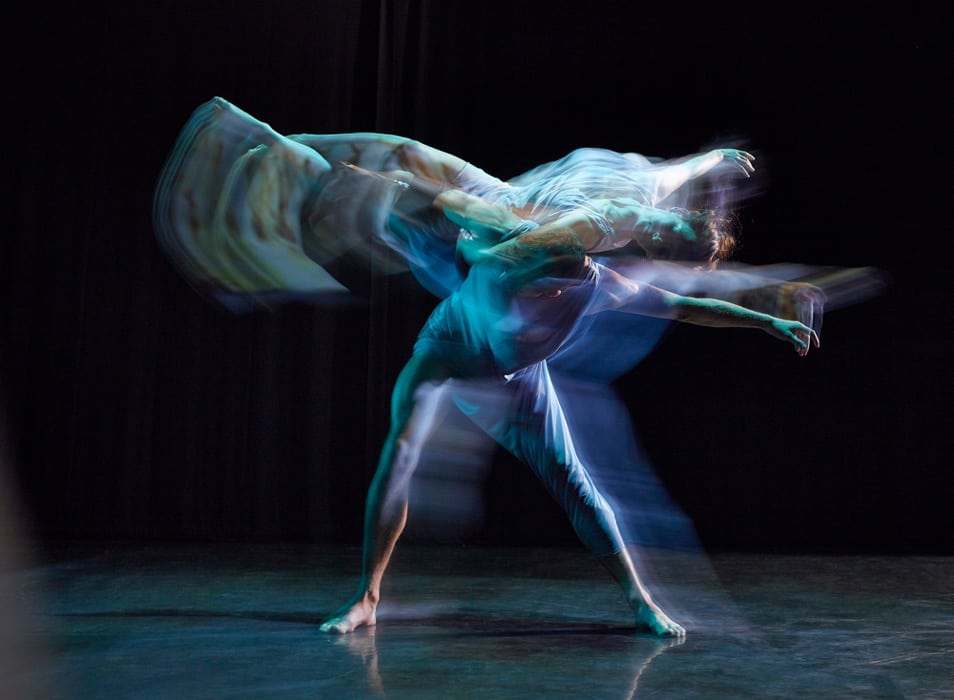The programme consists of five pieces, two of which—“Afterlight (Part One)” and “Two”—are reworkings of previously performed solos. The individual works establish their own distinct moods, but there’s an exquisite consonance to the whole bill, each piece collapsing fluidly into the next. In fact, it’s difficult to imagine some of the works being performed in isolation, such is the programme's cohesion.
First is “Still,” which commences with Dickson Mbi sculpting and stretching his shape amid a series of rhythmic projections. Energy emanates from his core, and his muscular, weighted stance—a vestige of his background as a popping artist—grounds him while his arms spiral furiously, whirring like a windmill. Midway through Carys Staton drifts in placidly to join him, her aerial deportment the air to his earth.
Their brief duet gives way to “Traces,” which sees Mbi, Thomasin Gülgeç and Maliphant himself swish and saunter like a watercolour painting in motion, swirls of blue-green hues encasing them as they bound around the stage, their crouched postures educing the choreographer’s tai chi and capoeira training. By contrast, “Two” is tapered, its lone performer (Staton) confined to a two-by-two-foot square of light. It’s a testament to Maliphant’s dynamic movement vocabulary that a phrase danced almost entirely in place, primarily through port de bras, still manages to prove engaging and replete.
Gülgeç returns for “Afterlight,” the undisputed highlight of the evening. The haunting keys of Erik Satie’s Gnossiennes toll in the background as the soloist is born from a sliver of amber light and cast unto the boundless stage. He lopes and extends, surfing across the floor and melting into the music until a beam envelops him once again, delivering him back to total darkness. The show's finest display of lighting artistry occurs midway through this piece, when a series of reeling projections give the floor the mesmerising appearance of a cavernous, churning sea.
“Still Current” concludes with a like-titled duet between Maliphant and Staton. Here the mood is sensual and penetrating, the intensity heightened by a pulsating score and periodic blackouts. There’s a strong symbiosis to the choreography, laden as it is with weight transfers and interwoven limbs, but the lighting motif ultimately dismantles this by sequestering the dancers in separate isles of light, a moving take on the sorrow of human estrangement. The work drags a little towards the end, though its soft, measured conclusion is well worth the wait.
Maliphant’s signature elegance is visible in across the programme, but he permits his dancers’ individual qualities to inform the direction of each piece: Mbi’s sinew anchors the first two works, while Staton's effervescent lightness and Gülgeç's fragility respectively lift and soften the pieces in which they appear. Together the performers exude a calm veneer, but a billowing undercurrent belies their composure, surfacing every now and then to electrify the quietude, then ebbing away just as elusively. The lexical ambiguity of the show's title emerges in this respect: “Still Current” is not only a comment on the modernity of Maliphant's style but a musing on the fragile moments of static motion which infuse it.









comments